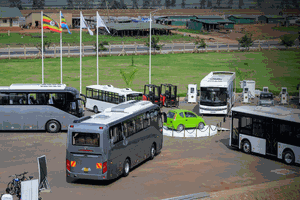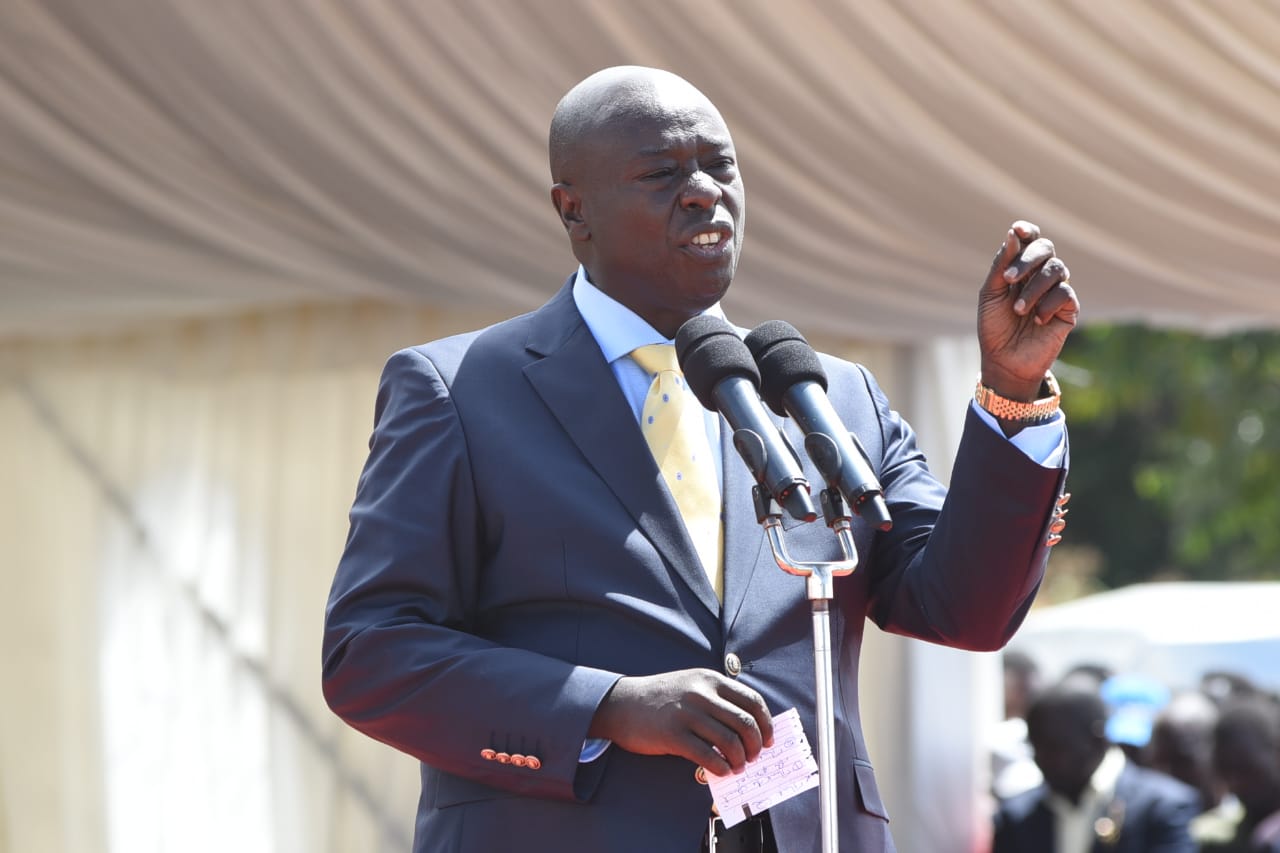Amref tips government on universal health coverage for underserved communities

Ms Nelly Negowow, an enrolled Midwife at Jangokoro Health Centre III in Zombo District speaks to some of the expectant mothers who camped at the facility ahead of their expected due date. Photo/Jane Nafula
What you need to know:
- We still have communities with no health facilities within a radius of 10 kilometres. Without support from government and partners, those people are bound to live in a cycle of suffering, yet health is the backbone of all sectors.
The government has been tasked to fast- track the implementation of the National Community Health Strategy to strengthen health service delivery at the community level.
Mr Tadius Mwesige, the Manager of Strengthening Community Health Workforce in Uganda Project, which is currently being implemented by Amref Health Africa-Uganda in West Nile, said strengthening community health systems would enable Uganda achieve Universal Health Coverage (UHC) and ensure a healthy population.
“Our call is for government to fast tract the implementation of the National Community Health Strategy and to continue working closely with development partners and donors to strengthen community health system because it is the surest way of accelerate Universal Health Coverage through provision of quality, evidence based and integrated community health services,” Mr Tumwesige said after interfacing with a section of district officials and community healthworkers in Moyo and Zombo whom they are working with to implement a one year project on strengthening community health work force in the region.
The project funded by Pfizer International is being implemented in the five districts of Zombo, Moyo, Adjumani, Terego and Arua and is expected to close in October this year.
According to Mr Mwesige, health needs are still huge in many parts of Uganda, including West Nile, despite improvement in health indicators that have been registered especially in the past one year, that the organisation has been partnering with the district leadership to implement the project.
He revealed that to date, West Nile is ranked second bottom in terms of performance of immunization coverage.
“We still have communities with no health facilities within a radius of 10 kilometres. Without support from government and partners, those people are bound to live in a cycle of suffering, yet health is the backbone of all sectors,” he observed.
When the team visited Jangokoro Health Centre III in Jangokoro Sub-country, Zombo District, they found several expectant women who had for weeks camped at the health facility to ensure they receive timely care once labour sets in.
Ms Nelly Negowow, an enrolled Midwife at Jangokoro Health Centre III said long distances had forced, women to trek and camp at health facilities before delivery due dates so that they are attended to on time.
Ms Nancy Akello, a 23 year old mother of two from Avogira Village in Langi Sub county whose home is about 3Km away from the nearest health centre said she has always pitch camped at the government health facility, a month to her due date, to avoid being delayed by transport challenges when she starts experiencing labour pains.
“Whenever I'm about to give birth, I always go to hospital a month earlier so that I'm not confronted with transport challenges. Using a boda is costly. I need about Shs 15000 to get to the hospital and come back," Ms Akello narrated.
Ms Akello also testified that the long distance has made it difficult for parents to take their children for routine immunization.
“In the last one year, life has been a bit easy because of health camps organized by Amref Health Africa. I have immunized both my children and I'm waiting for the next outreach to take them for another dose,” she said.
During the monthly outreaches, community members are also taken through proper hygiene and sanitation practices as well as pregnancy, childbirth and new born care so that the know when to seek help.
Ms Jenifer Afayurwoth 24, a mother of two from Langi Village, Zombo District also testified that she cannot risk to stay home until the labour pains set in.
Ms Afoyurwoth said,"I usually report to hospital two weeks to my expected due date. The village health teams have always advised us to go to hospital early enough, to avoid delays that might have grave consequences on our health or that of our babies.”
According to the World Health Organisation, the three Delays contributing to high maternal and infant mortality rates in developing countries like Uganda, include delay in decision to seek healthcare, delay in reaching care due to distance and delay in receiving care while at a health facility.
Although the 2022 Uganda Demographic and Health Survey estimates indicate that Ugandan maternal mortality ratio has reduced from 336 to 189 per 100,000 live births, while infant mortality went from 43 to 34 per 1,000 live births, experts urge that all deaths can be prevented if the three delays are avoided.
Records at Zombo District indicate that Athuma Sub County does not have any health facility, Nyapea Sub-county does not have any public facility, Padea Town Council, Paidha and Akaa sub counties don’t have level III facilities.
Available records indicate that Zombo has a total of 7 public health centre 11, 7health centre II, one health Centre IV and lacks a district hospital to take care of the health needs of a population of 311,724 people.
Maternal mortality stands at 111/10,000, neonatal mortality rate 16.7 per 1000 live births, under five mortality rate is 11.6 while adolescent pregnancy rate is 27.4, far above the national rate of 24 percent.
In addition, the only Health centre IV in the district is under staffed with only 28 percent of the needed workforce.
Mr Mwesige called for a collective effort to end financial and geographical barriers to ease access to health services.
According to the Ministry of Health, Uganda’s plan is to have health facilities within a radius of 5 Km and that currently, 85 percent of the population can now access health facilities within this radius.
In February last year, the government launched the National Community Health Strategy (NCHS) 2021/22 –2025/26, to improve access to primary, promotive, curative, preventive and rehabilitative health care services through a multi-sectoral collaboration.
While officiating at the launch of the strategy recently, health minister, Dr Jane Ruth Aceng acknowledged that Primary Health Care requires building of strong and resilient systems from the community to national levels, with specific investments towards community health.
Dr Franklin Idi, Moyo District Health Officer however, acknowledges that the population growth has not matched with expansion and investments in the health system.
Dr Idi said poor quality of health services, low hospital coverage, inadequate infrastructure in rural areas, and shortage of health workers coupled with drug stock outs remain a challenge.
The Ministry of Health acknowledges that although Uganda has a well-defined essential health services package, health is still greatly under-funded, with government funding 15% of the total health expenditure, leading to high out-of-pocket expenditures by households (about 41% of total health expenditure), and reliance on unstable external aid.
Mwesige believes this kind of situation can be turned around if the Community Health Strategy for Uganda, which is running from 2021 to 2026, with the aim to ensure a competent, equipped, committed and compensated community health workforce is adhered to.
He said through initiatives like Strengthening Community Health Workforce in Uganda, efforts towards the reduction of vaccine preventable diseases like measles, polio, and tuberculosis would be checked.
This year, Amref partnered with the Ministry of Health to build the capacity of the district health teams to deliver integrated Expanded Program on Immunization (UNEPI) services more effectively among other services.
So far, the project has been able to provide essential services to 40,422 beneficiaries across the project districts.
The dual also updated a comprehensive national data for community health workers and enhanced the capacity of the different districts health teams to use that database for evidence-based decision-making and management of the community health workforce.
A total of 4,880 community health workers were registered in the data base.
They also partnered with government to procure smart phones and tablets for 470 village health team members in Moyo District to enable them capture data using digital community health information system.
Mr Jimmy Obulejo, Moyo District Statistician said the average monthly reporting has since increased from 70 to 87percent in the past four months.
In addition, immunization categorization for the district has shifted from four to three due to improved mobilization of communities for outreach services.
According to him, category four means, both access and utilization of immunization services are poor while category three means access is good but utilization is poor.
Ms Christine Acirocan, the Assistant Zombo District Health Officer in charge of Maternal and Child Health said hospital delivers increased from 50 percent to 69 percent, the number of mothers who attend antenatal care with in the first three month of pregnancy increased from 23 to 31 percent while immunization coverage moved from 83 percent to 94 percent nearing the recommended target of 95 percent.




